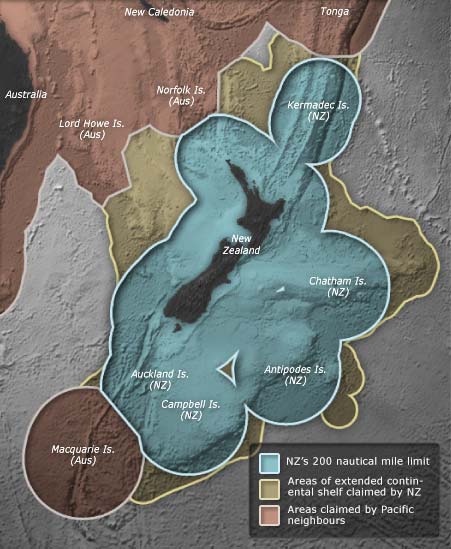
Since 1978 New Zealand’s legal claim to the sea floor around its islands has been defined by a line drawn 200 nautical miles (370.4 kilometres) around its islands. But in some places New Zealand’s mostly underwater continent extends well beyond this. Under the United Nations Convention on the Law of the Sea there is a process for countries to apply for an extension of the area of sea floor that they have control over. In New Zealand’s case this applies to areas where the submerged New Zealand continent extends beyond the 200-mile limit. In 2006 New Zealand is likely to propose that its legal sea floor be enlarged (taking in parts of the area marked in brown). Where this extends beyond the 200-mile limit, New Zealand will enjoy rights over mineral resources and organisms (such as sponges and molluscs) on the sea floor, but not fish stocks.
Using this item
Te Ara - The Encyclopedia of New Zealand
This item has been provided for private study purposes (such as school projects, family and local history research) and any published reproduction (print or electronic) may infringe copyright law. It is the responsibility of the user of any material to obtain clearance from the copyright holder.
Source: GNS Science








Add new comment